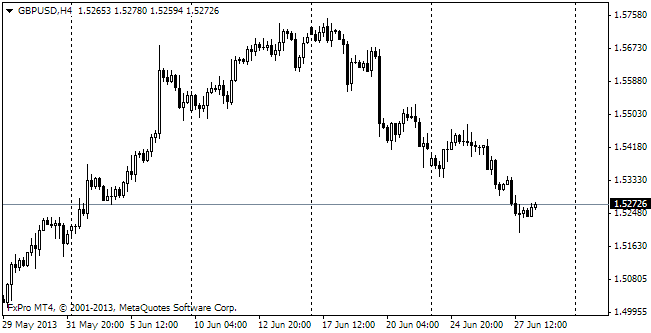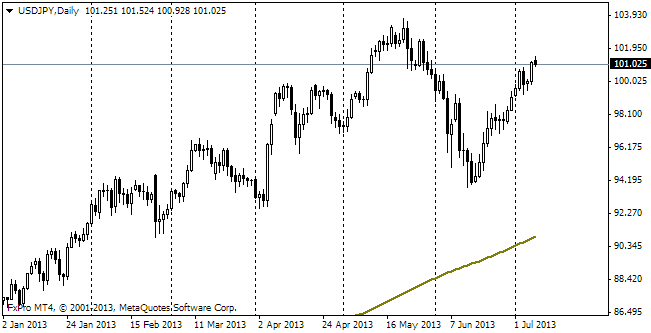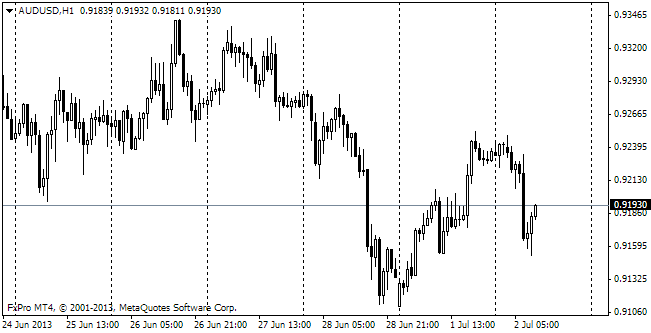EUR/usd
As reported in yesterday's meeting minutes of fomc, if the US economy maintains the expected growth rate, the Fed will announce the end of QE already in October. It means that at the October meeting the decrease will make 15bln and before that, in July and September, asset purchases will be reduced by 10bln. It is unlikely that the Fed will give up this course for a quicker one because of the strong employment data. It is remarkable that the minutes highlighted concerns about investors' possible misinterpretation of the risks in the hope that interest rates will remain low for long. Yet, these remarks, albeit flickered in the press, seem to have passed unnoticed by the markets. On the release of the minutes the US dollar tumbled and stock indices grew. It means that despite the Fed's fear to hamper the recovery, the market generally expected a tougher tone of comments. FOMC is afraid to repeat the mistake it made in the 30s when it toughened the policy too sharply, hindering the recovery and pushing the economy back into the recession and thus prolonging the Great Depression. In our opinion, with its caution the Fed runs the risk of making another mistake – be too mild, letting market participants build up the leverage and inadequately estimate the risks. As seen, the Fed is already considering the issue, though, too cautiously.
GBP/USD
On the reaction to the FOMC's minutes the British pound grew to 1.7160. It is a bit below the high hit last Friday (1.7178), but still indicates the return to the area of the multi-year highs. The bulls hardly leave any hope for breaking through 1.27 and going higher. Besides, the psychological pressure on the British currency is also building up. Not only the country's corporations point out the risks which the economy may face, but also Goldman Sachs states that the current rate is a burden for the economy. Today the Bank of England publishes its decision on the major interest rate and QE size. Neither the former nor the latter will possibly change, and it is quite likely that there won't any comments, so we shouldn't expect any reaction on the sterling's side at 11:00 GMT.

USD/JPY
The yen was again in demand yesterday. That time due to depreciation of the dollar. So, we get that the demand for the Japanese currency is now supported together by USD's weakness and the correction in the stock exchanges (when it happens). Technically, the pair is again below its 200-day MA and, being at 101.50, still has the potential for growth, at least to the lower bound of the 101.20-102.75 range.

AUD/USD
The Australian economy created 15.9K of new jobs in June – a bit more than expected. The unemployment rate at that grew from 5.9% to 6.0%, but it occurred due to the increase in the participation rate. That rate suddenly grew from 64.6% to 64.7%. It is a good sign. However, behind the employment growth there is increase in the number of the part-time employed, which is worse. The full-time employment shrank by 3.8k. That detailed consideration of the stats helps to account for the performance of the aussie, which first started growing, but soon turned down.
